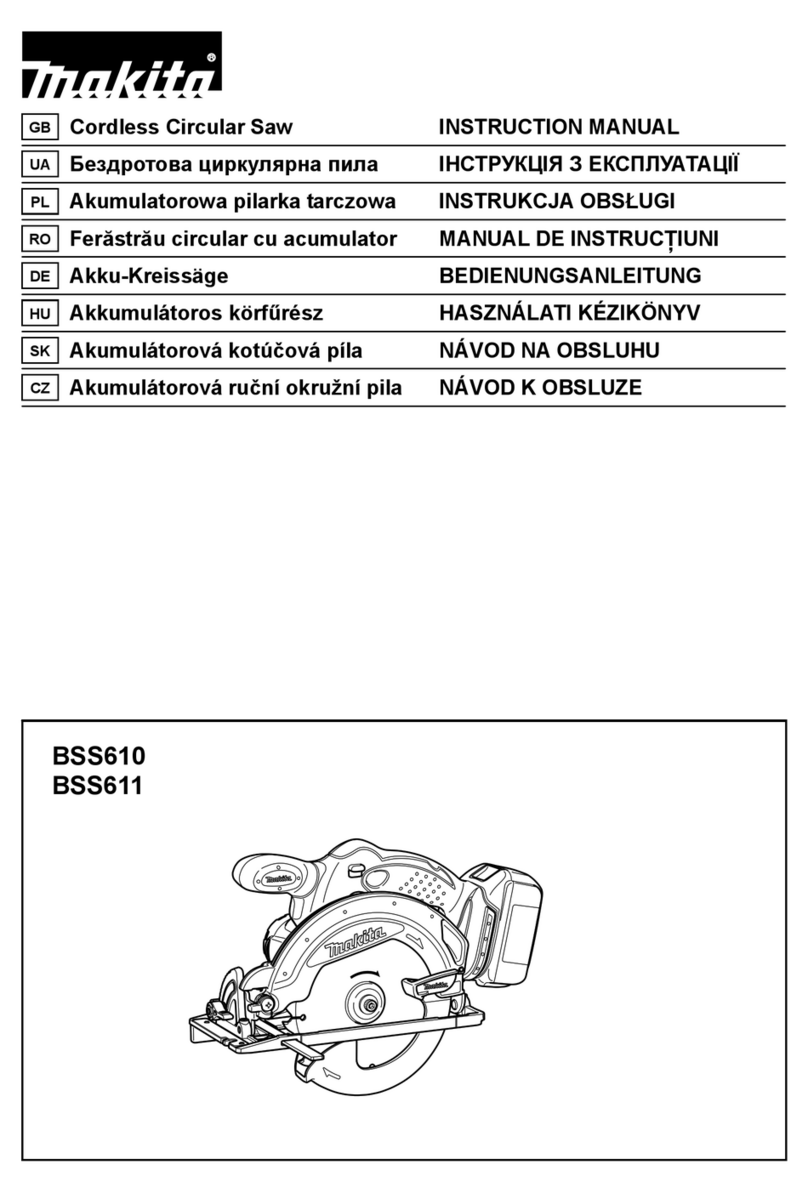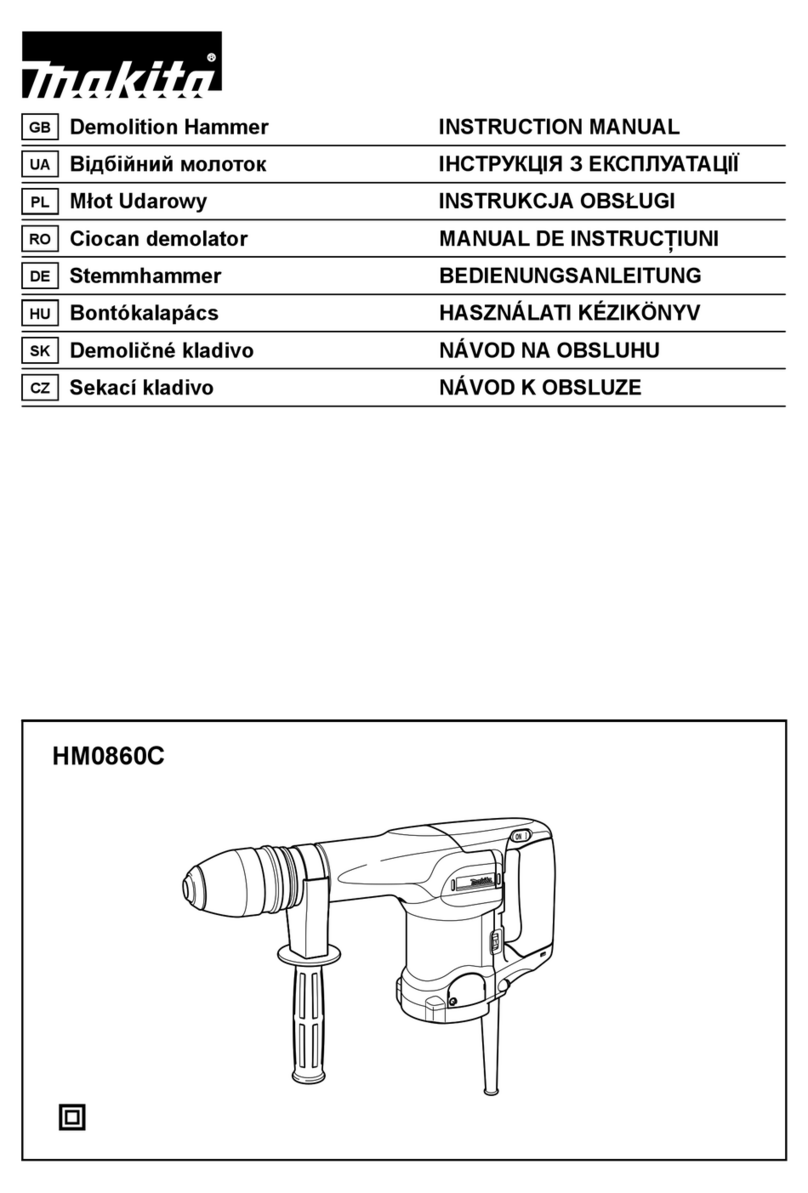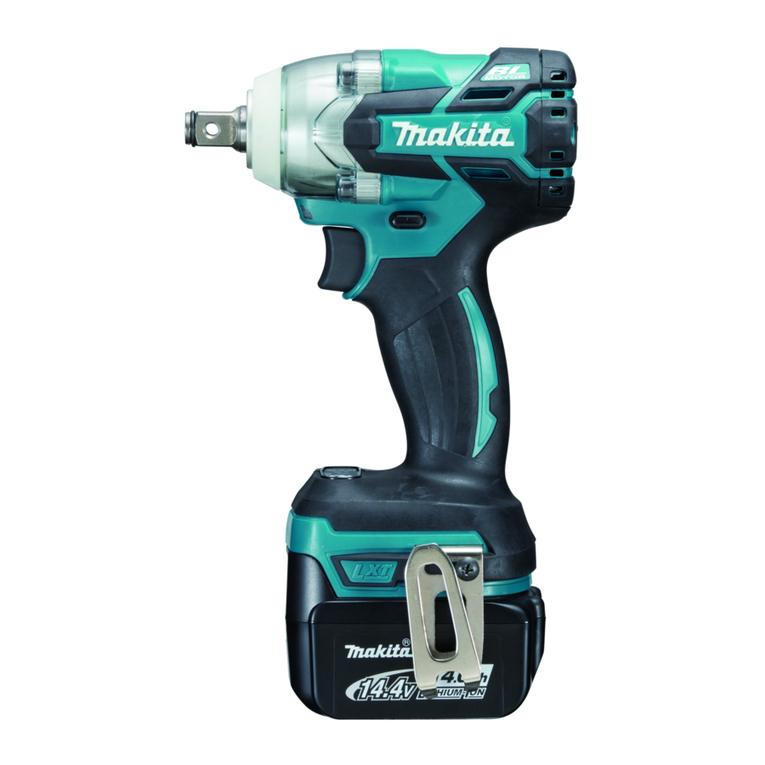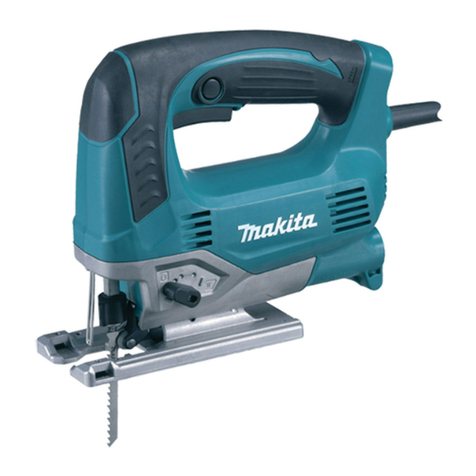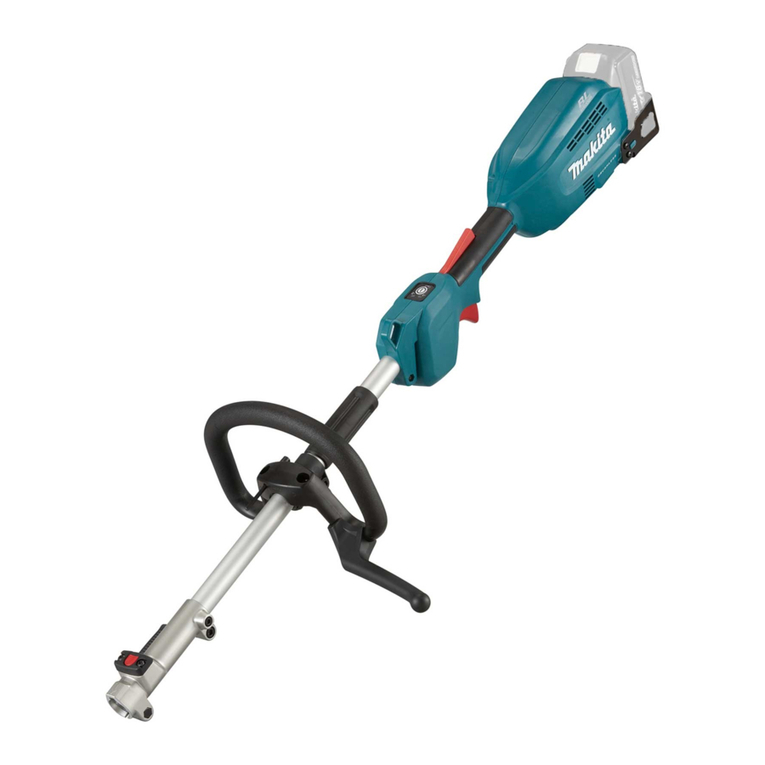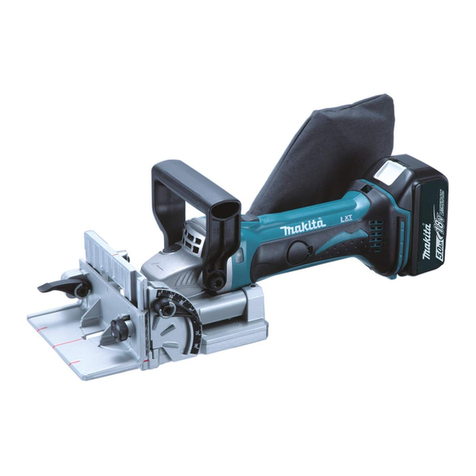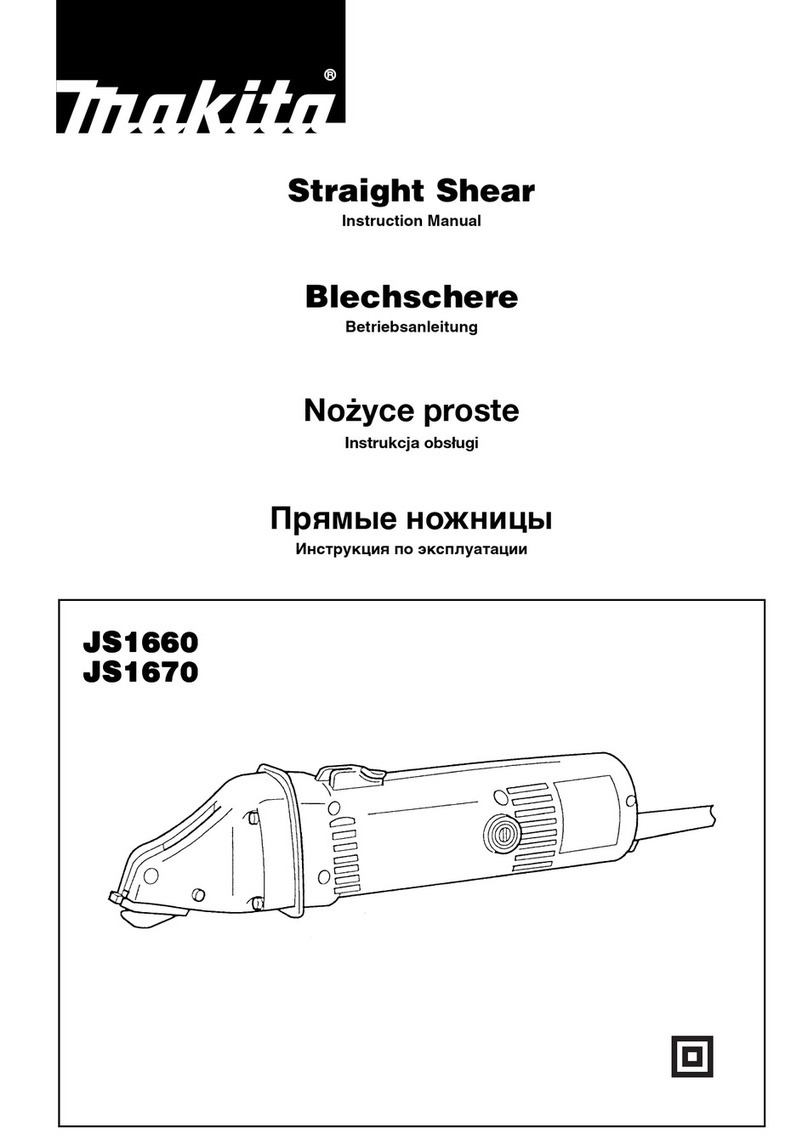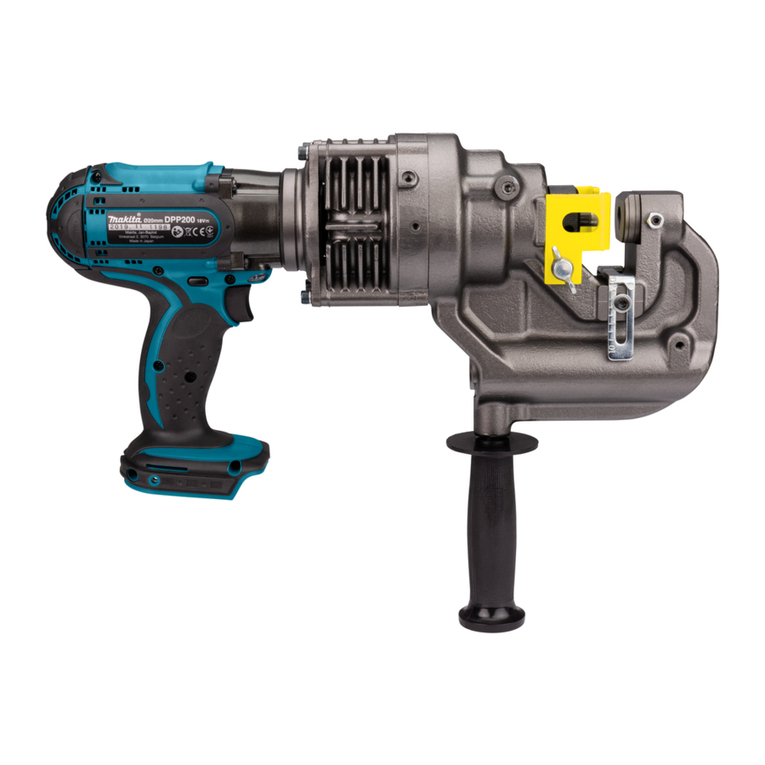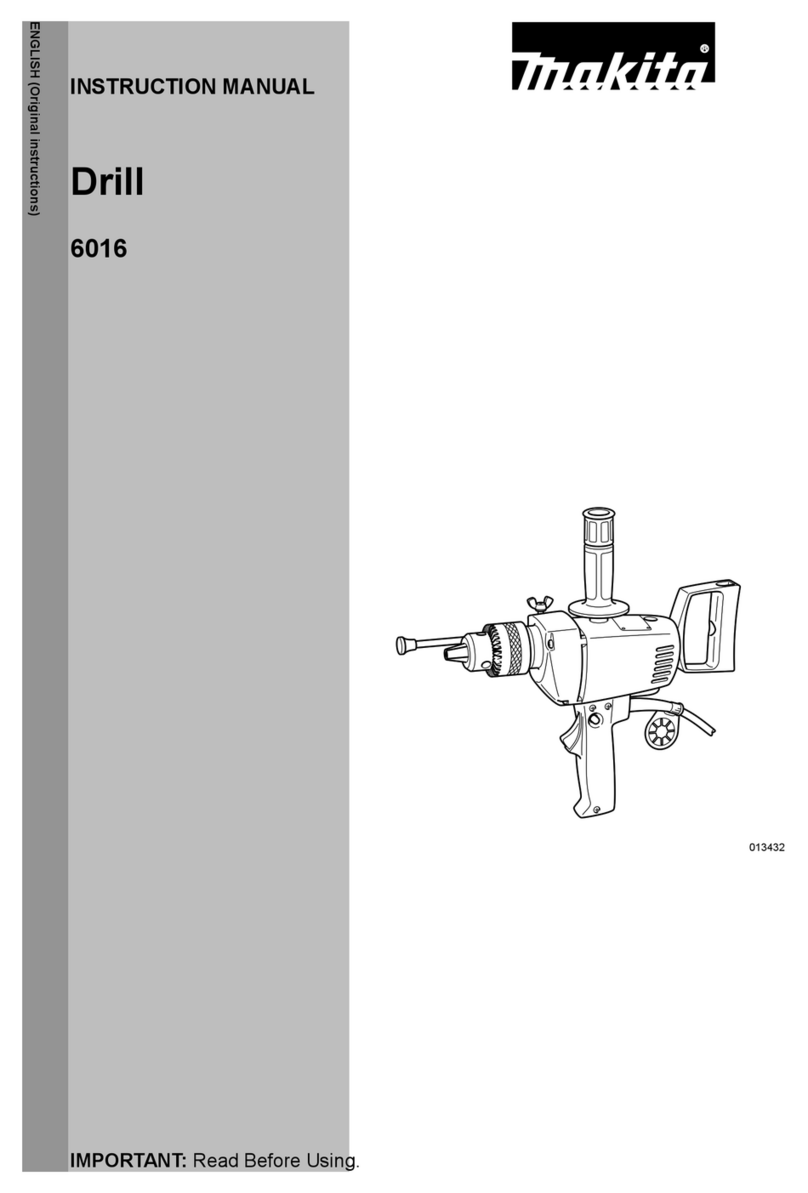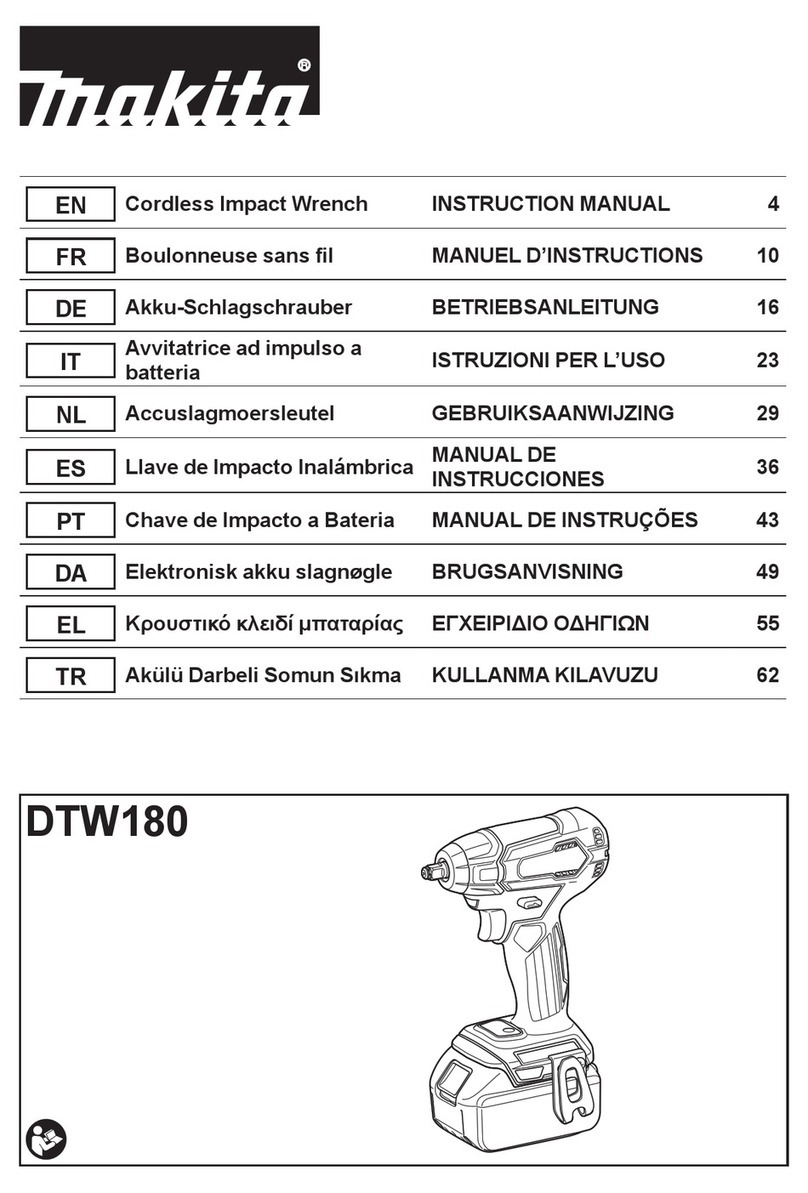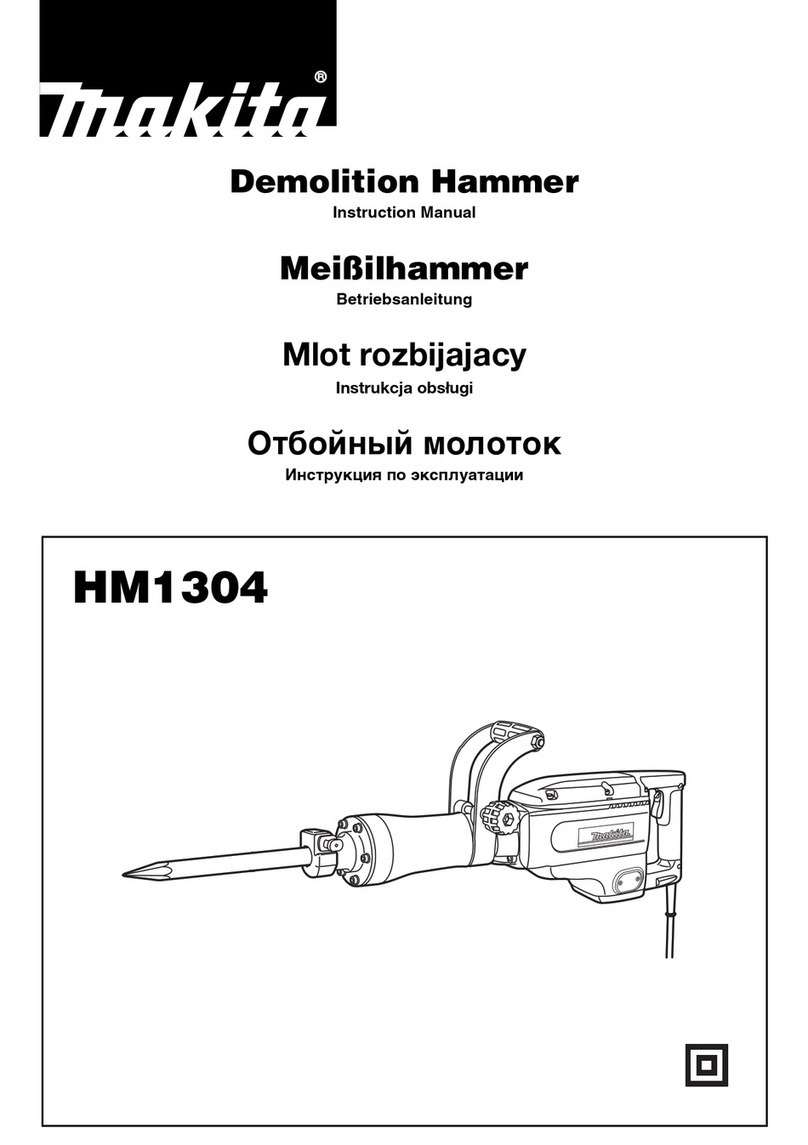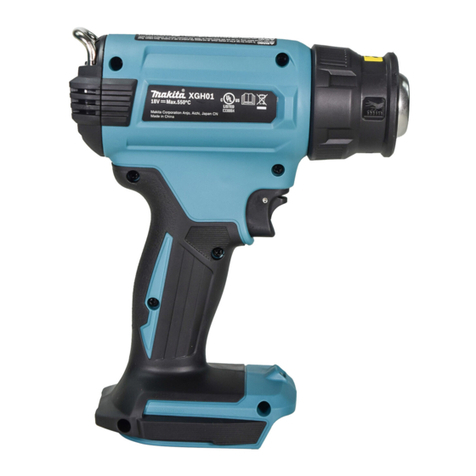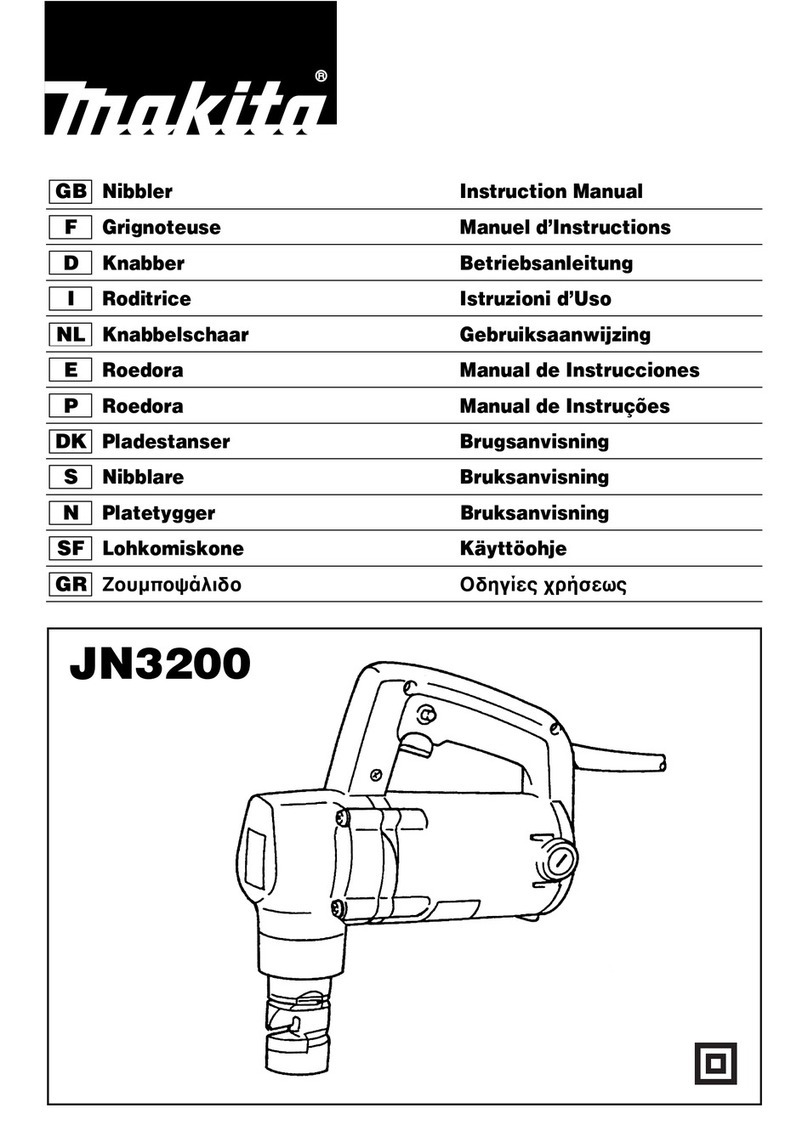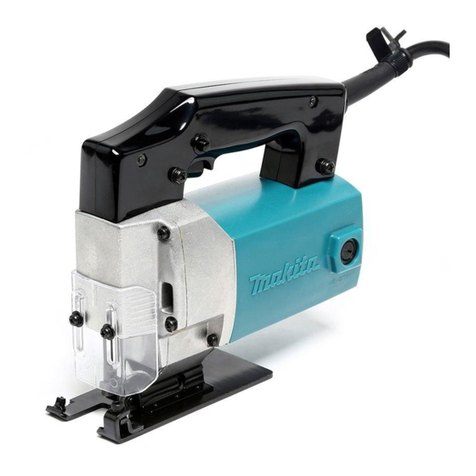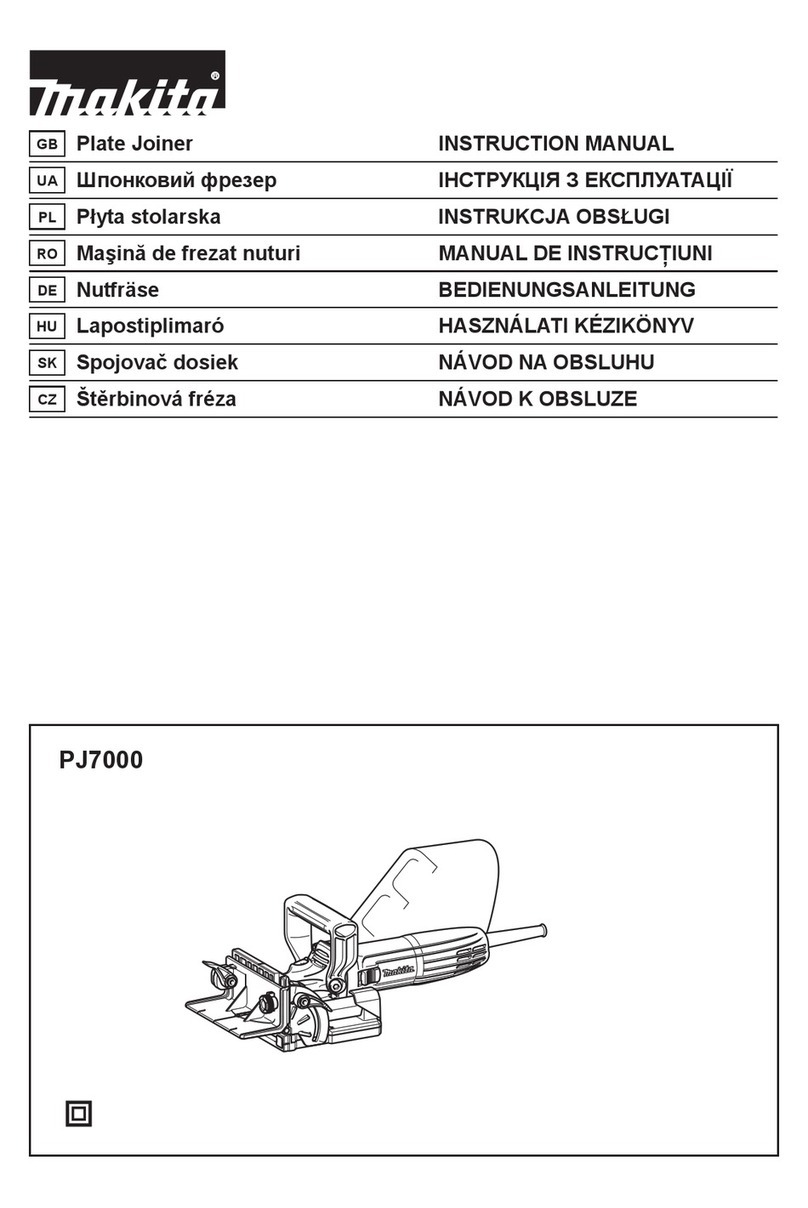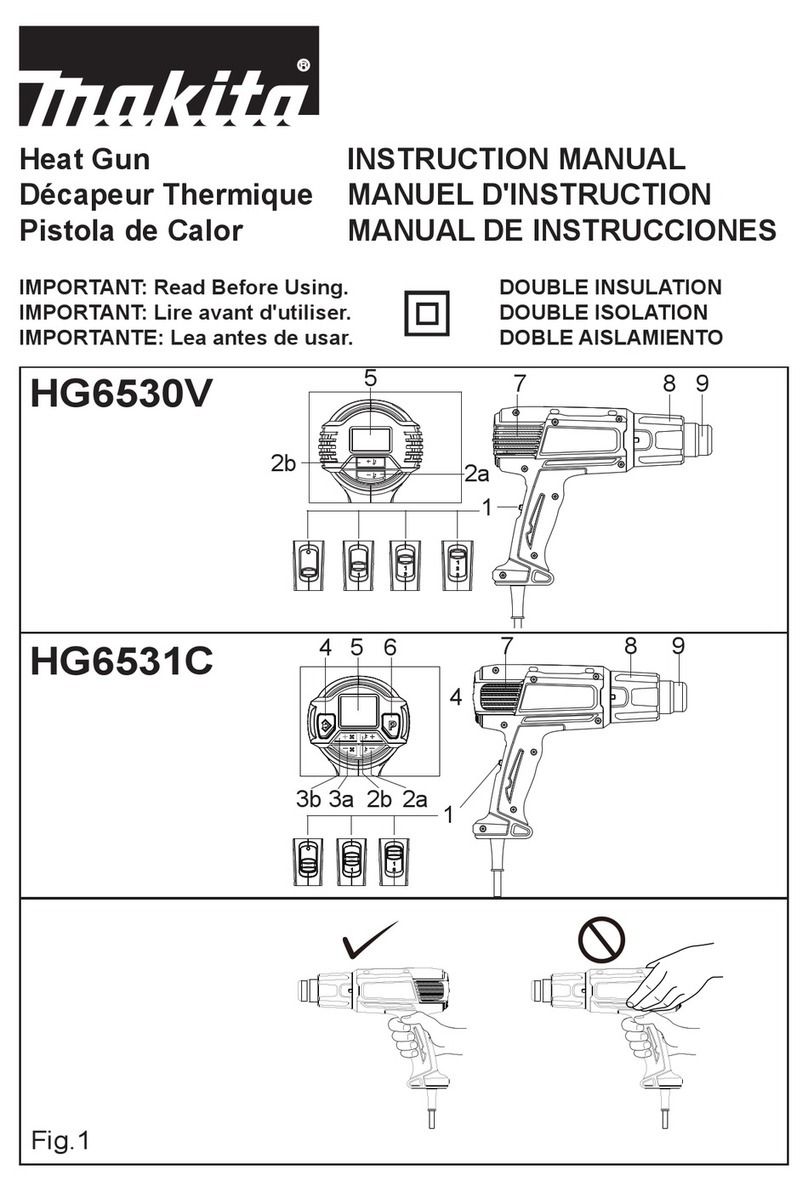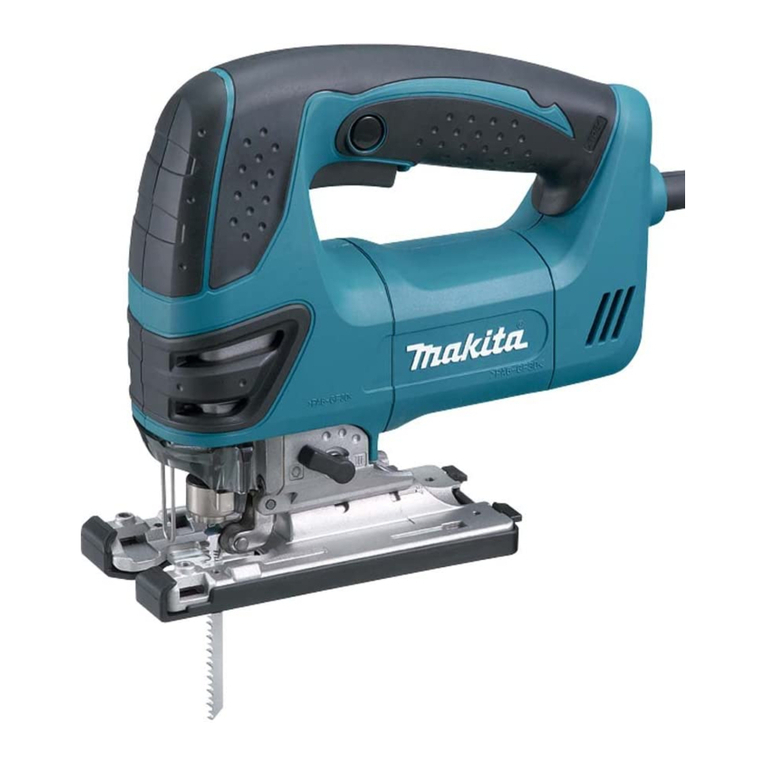
5
ENG220-1
Vibration
The vibration total value (tri-axial vector sum)
determined according to EN60745-2-11:
Work mode : cutting chipboard
Vibration emission (ah,CW) : 5 m/s2
Uncertainty (K) : 1.5 m/s2
ENG304-1
Work mode : cutting sheet metal
Vibration emission (ah,CM) : 4.5 m/s2
Uncertainty (K) : 1.5 m/s2
For Model 4328,4329
ENG101-1
For European countries only
Noise
The typical A-weighted noise level determined according
to 60745-2-11:
Sound pressure level (LpA) : 83 dB(A)
Uncertainty (K) : 3 dB(A)
The noise level under working may exceed 85 dB (A).
Wear ear protection.
ENG220-1
Vibration
The vibration total value (tri-axial vector sum)
determined according to EN60745-2-11:
Work mode : cutting chipboard
Vibration emission (ah,CW) : 7 m/s2
Uncertainty (K) : 1.5 m/s2
ENG304-1
Work mode : cutting sheet metal
Vibration emission (ah,CM) : 5 m/s2
Uncertainty (K) : 1.5 m/s2
ENH101-8
EC-DECLARATION OF CONFORMITY
Model; 4326, 4327, 4328, 4329
We declare under our sole responsibility that this
product is in compliance with the following standards of
standardized documents;
EN60745, EN55014, EN61000 in accordance with
Council Directives, 2004/108/EC, 98/37/EC.
CE2007
000230
Tomoyasu Kato
Director
Responsible Manufacturer:
Makita Corporation
3-11-8, Sumiyoshi-cho, Anjo, Aichi, JAPAN
Authorized Representative in Europe:
Makita International Europe Ltd.
Michigan Drive, Tongwell, Milton Keynes, Bucks MK15
8JD, ENGLAND
GEB016-1
SPECIFIC SAFETY RULES
DO NOT let comfort or familiarity with product
(gained from repeated use) replace strict adherence
to jig saw safety rules. If you use this tool unsafely
or incorrectly, you can suffer serious personal
injury.
1. Hold power tools by insulated gripping
surfaces when performing an operation where
the cutting tool may contact hidden wiring or
its own cord. Contact with a "live" wire will make
exposed metal parts of the tool "live" and shock
the operator.
2. Use clamps or another practical way to secure
and support the workpiece to a stable platform.
Holding the work by hand or against your body
leaves it unstable and may lead to loss of control.
3. Always use safety glasses or goggles.
Ordinary eye or sun glasses are NOT safety
glasses.
4. Avoid cutting nails. Inspect workpiece for any
nails and remove them before operation.
5. Do not cut oversize workpiece.
6. Check for the proper clearance beyond the
workpiece before cutting so that the blade will
not strike the floor, workbench, etc.
7. Hold the tool firmly.
8. Make sure the blade is not contacting the
workpiece before the switch is turned on.
9. Keep hands away from moving parts.
10. Do not leave the tool running. Operate the tool
only when hand-held.
11. Always switch off and wait for the blade to
come to a complete stop before removing the
blade from the workpiece.
12. Do not touch the blade or the workpiece
immediately after operation; they may be
extremely hot and could burn your skin.
13. Do not operate the tool at no-load
unnecessarily.
14. Some material contains chemicals which may
be toxic. Take caution to prevent dust
inhalation and skin contact. Follow material
supplier safety data.
15. Always use the correct dust mask/respirator
for the material and application you are
working with.
SAVE THESE INSTRUCTIONS.
WARNING:
MISUSE or failure to follow the safety rules stated in
this instruction manual may cause serious personal
injury.
